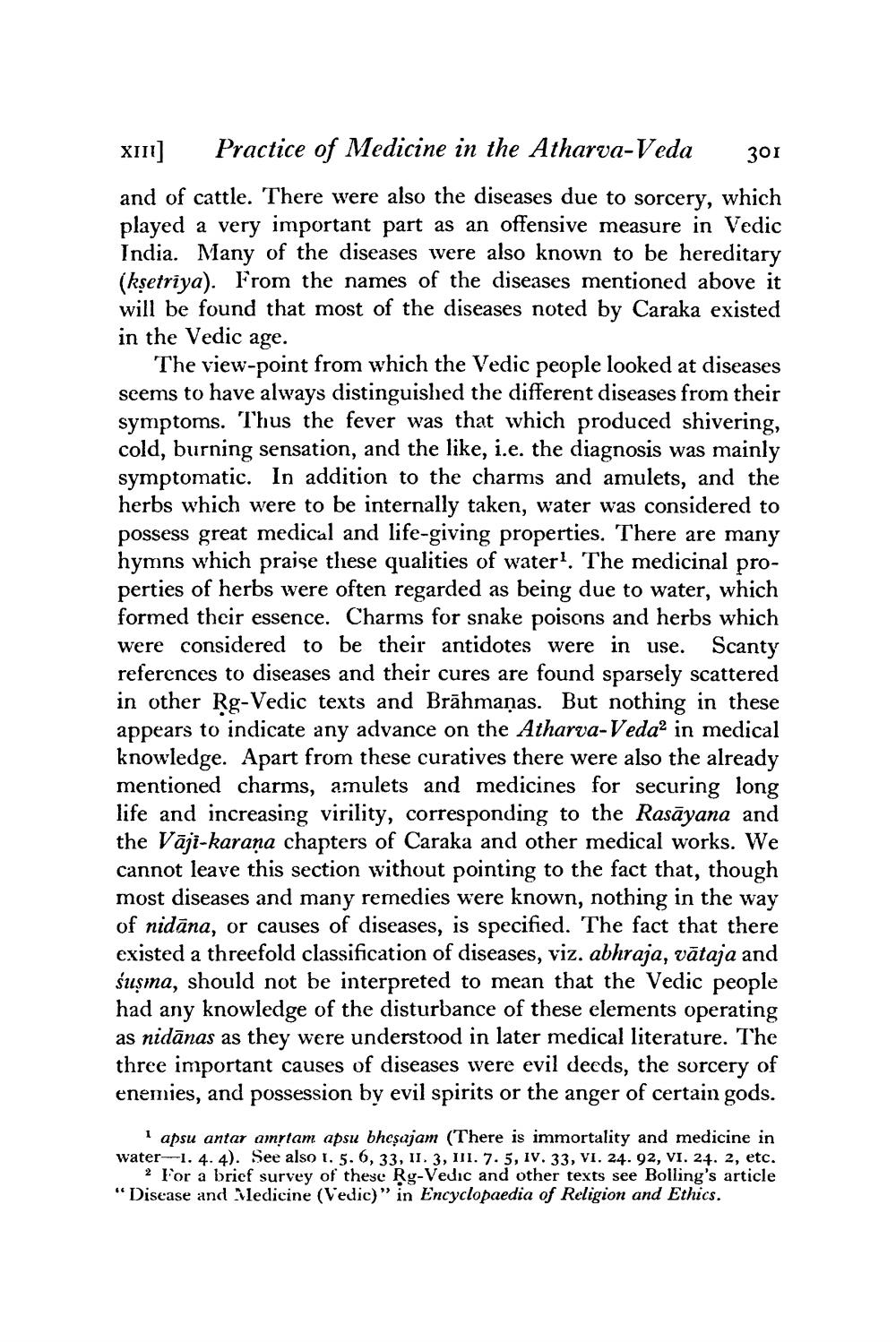________________
XI11] Practice of Medicine in the Atharva-Veda 301 and of cattle. There were also the diseases due to sorcery, which played a very important part as an offensive measure in Vedic India. Many of the diseases were also known to be hereditary (kşetriya). From the names of the diseases mentioned above it will be found that most of the diseases noted by Caraka existed in the Vedic age.
The view-point from which the Vedic people looked at diseases seems to have always distinguished the different diseases from their symptoms. Thus the fever was that which produced shivering, cold, burning sensation, and the like, i.e. the diagnosis was mainly symptomatic. In addition to the charms and amulets, and the herbs which were to be internally taken, water was considered to possess great medical and life-giving properties. There are many hymns which praise these qualities of water. The medicinal properties of herbs were often regarded as being due to water, which formed their essence. Charms for snake poisons and herbs which were considered to be their antidotes were in use. Scanty references to diseases and their cures are found sparsely scattered in other Rg-Vedic texts and Brāhmaṇas. But nothing in these appears to indicate any advance on the Atharva-Veda in medical knowledge. Apart from these curatives there were also the already mentioned charms, amulets and medicines for securing long life and increasing virility, corresponding to the Rasāyana and the Vāji-karaṇa chapters of Caraka and other medical works. We cannot leave this section without pointing to the fact that, though most diseases and many remedies were known, nothing in the way of nidāna, or causes of diseases, is specified. The fact that there existed a threefold classification of diseases, viz. abhraja, vātaja and suşina, should not be interpreted to mean that the Vedic people had any knowledge of the disturbance of these elements operating as nidānas as they were understood in later medical literature. The three important causes of diseases were evil deeds, the sorcery of enemies, and possession by evil spirits or the anger of certain gods.
apsu antar amytam apsu bhesajam (There is immortality and medicine in water--1. 4.4). See also 1. 5. 6, 33, II. 3, III. 7. 5, IV. 33, VI. 24. 92, VI. 24. 2, etc.
2 For a brief survey of these Ry-Vedic and other texts see Bolling's article "Disease and ledicine (Vedic)” in Encyclopaedia of Religion and Ethics.




